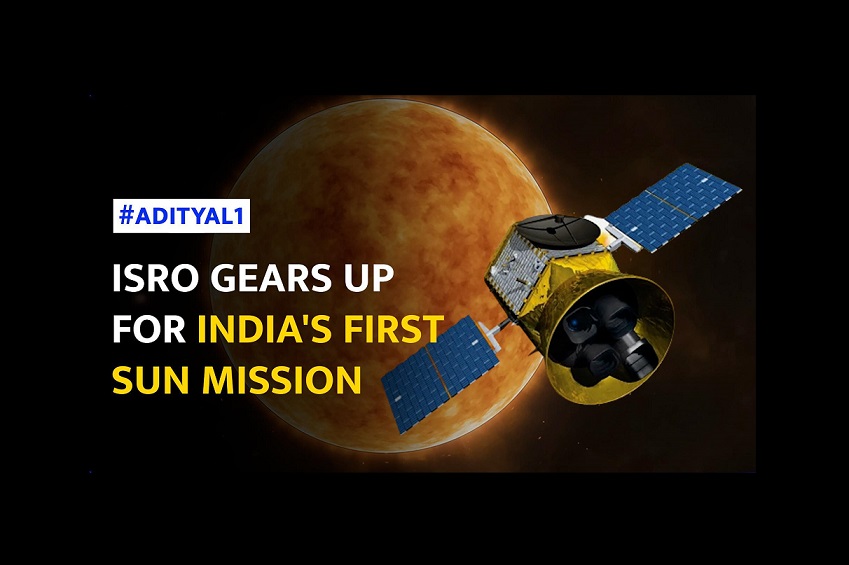
Aditya-L1: India’s Groundbreaking Solar Exploration Mission
September 1, 2023
Aditya-L1, derived from the Sanskrit word "आदित्य," meaning "Sun," is an ambitious coronagraphy spacecraft project. Spearheaded by the Indian Space Research Organisation (ISRO) in collaboration with various Indian research institutes, this mission is set to revolutionize our understanding of the Sun and its interactions with Earth. In this blog post, we'll delve into the significance, objectives, and potential discoveries of the Aditya-L1 mission.
Mission Objectives:
The Aditya-L1 mission boasts several critical scientific objectives:
1. Studying Solar Upper Atmosphere Dynamics: Aditya-L1 aims to investigate the dynamics of the solar upper atmosphere, including the chromosphere and corona.
2. Exploring Solar Heating and Plasma Physics: The mission will unravel the mysteries behind chromospheric and coronal heating, the physics of partially ionized plasma, and the initiation of coronal mass ejections (CMEs) and solar flares.
3. In-situ Particle and Plasma Environment Observation: By gathering data on solar wind and energetic particle fluxes, the mission contributes to our understanding of particle dynamics emanating from the Sun.
4. Understanding the Solar Corona and Its Heating Mechanisms: Aditya-L1 will shed light on the temperature, velocity, and density of the coronal and coronal loops plasma, unlocking the secrets of the Sun's enigmatic heating mechanism.
5. Comprehensive CME Study: The mission will explore the development, dynamics, and origin of CMEs, crucial for space weather predictions.
6. Multilayer Solar Processes: Aditya-L1 aims to identify the sequence of processes occurring at various solar layers, from the chromosphere to the extended corona, which lead to solar eruptive events.
7. Magnetic Field Topology: The spacecraft will measure magnetic field topology in the solar corona, providing invaluable insights into space weather drivers.
History:
The Aditya-L1 mission's origins trace back to 2008 when it was initially conceptualized as a smaller satellite. Over time, its scope expanded into a comprehensive solar and space environment observatory situated at the L1 Lagrange point. As of July 2019, the mission had a budget allocation of ₹378.53 crore, excluding launch costs.
Overview:
After its launch, Aditya-L1 will take approximately 109 Earth days to reach its intended halo orbit around the L1 point, located 1.5 million kilometers from Earth. The spacecraft, weighing 1,500 kg, is equipped with seven diverse science payloads. These instruments will facilitate studies in coronal heating, solar wind acceleration, magnetometry, solar radiation, and more, all while providing critical data on space environment dynamics.
Significance and Potential Discoveries:
The Aditya-L1 mission holds immense promise for advancing our understanding of the Sun and its interactions with Earth:
1. Coronal Heating Mechanism: Solving the mystery of why the Sun's corona is hotter than its surface is a central focus. Aditya-L1's instruments, including SUIT and VELC, will enable detailed studies of the corona's dynamics, potentially unlocking the mechanisms responsible for its intense heat.
2. Space Weather Prediction: The mission's data will aid in forecasting space weather events, helping mitigate their impacts on Earth's technology and infrastructure.
3. Solar Wind and Magnetic Field Studies: Aditya-L1 will provide comprehensive insights into the solar wind's properties and its interaction with Earth's magnetosphere.
4. Understanding Earth's Climate: By examining solar radiation and its effects on Earth's upper atmosphere, the mission will contribute to our understanding of solar influences on climate patterns.
5. Comprehensive Solar Atmosphere Imaging: Multi-wavelength observations of the Sun's atmosphere will allow scientists to trace energy and matter flow between different layers, offering insights into the Sun's complex processes.
6. Origin and Dynamics of CMEs: Understanding the initiation and behavior of CMEs will improve our ability to predict these potentially disruptive solar events.
Conclusion:
Aditya-L1 represents a significant milestone in India's space exploration endeavors and promises to yield groundbreaking insights into the Sun's behavior and its impact on our planet. With its advanced instruments and ambitious objectives, this mission holds the potential to transform our understanding of the solar system's central star. Stay tuned for the remarkable discoveries that await us as Aditya-L1 embarks on its journey to unlock the Sun's secrets.